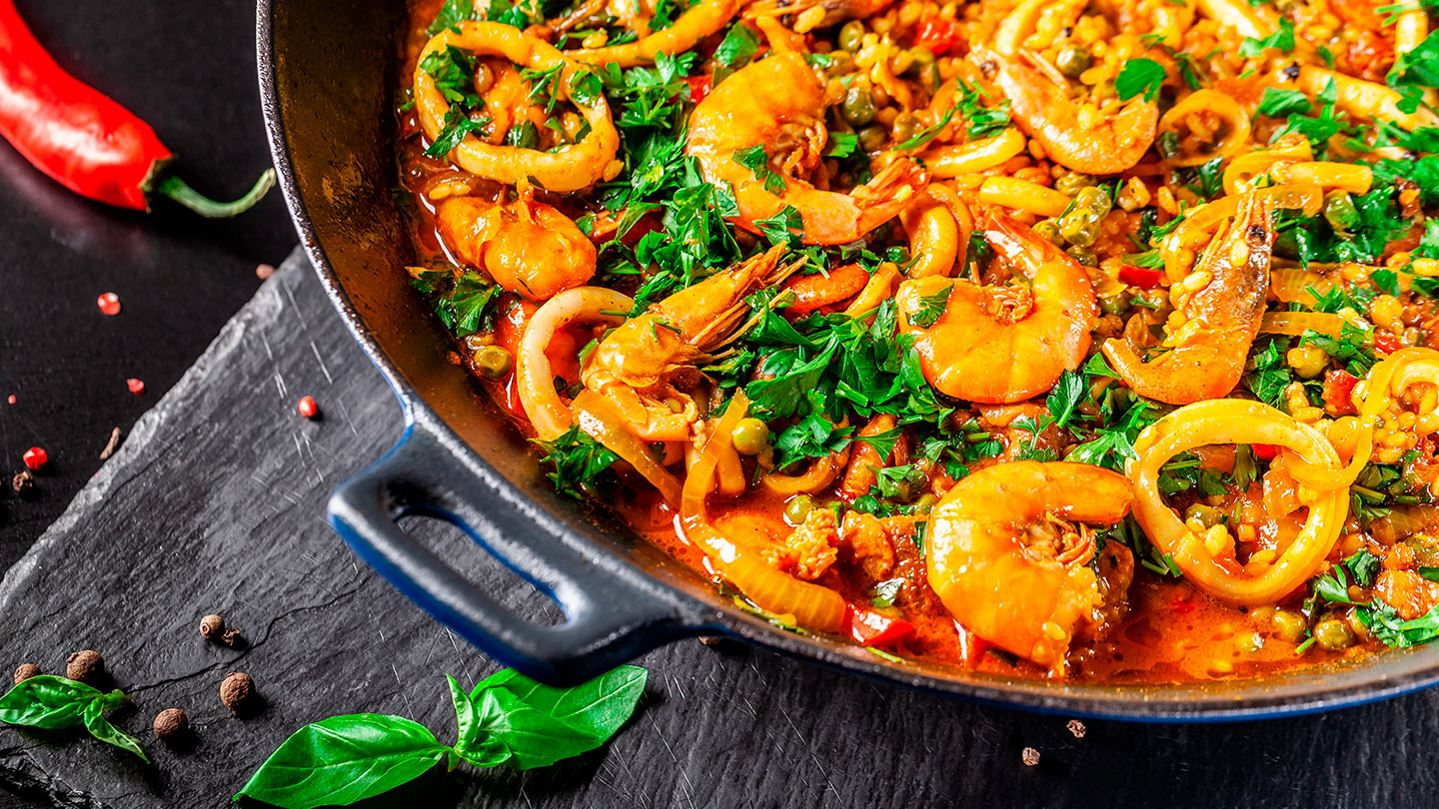
Ready Meals and Other Cook-Chill Products
Food items: Casseroles*, Ready Meals containing Fish, Ready Meals containing Game-Bird, Goulash*, Ready Meals containing Meat, Ready Meals containing Offal, Ready Meals containing Pasta, Ready Meals containing Poultry, Sauces*, Ready Meals containing Seafood, Soups* and Ready Meals containing Vegetables.
Recommended gas mixture
30-50% CO2
50-70% N2
The gases and mixtures listed above are for general guidance. To identify the optimum gas for your product and process, we recommend you undertake a product trial, with the help of an Air Products MAP gas specialist.
Storage temperature
Legal maximum*: 8° C
Recommended**: 0° C to +3° C
Achievable shelf-life
In air: 2-5 days
In MAP: 14-22 days
Principle spoilage organisms and mechanics
Pseudomonas species (in air), Lactic acid bacteria, Enterobacteriaceae, yeasts and moulds.
Food poisoning hazards include
Clostridium species, Salmonella species, Staphylococcus aureus, Listeria monocytogenes, Bacillus species, E.coli and E.coli 0157, Yersinia enterocolitica can be important for pork products.
Typical MAP machines***
Retail
• TFFS – Thermoform-fill-seal
• PTLF – Preformed tray and lidding film
Typical types of package
Retail: Tray and lidding film, Tray inside pillow pack
Examples of typical MAP materials***
Retail
Tray:
• UPVC/PE
• HDPE
• EPS/EVOH/PE
Lidding and/or pillow pack film:
• PET/PVdC/PE
• PA/PVdC/PE
• PC/EVOH/EVA
• MPET
• MOPP
Cook-chill is a catering or food processing system whereby food is hygienically prepared, pasteurised and rapidly chilled to between 0°C and 3°C. The food is then stored at 0°C to 3°C before being reheated to 70°C for two minutes (or the thermal equivalent) prior to consumption.
Under UK Department of Health (1989) guidelines for cook-chill, the maximum recommended shelf-life for such products is five days. However, these guidelines only refer to cook-chill products intended for the catering market, and the possibility exists for such products to have longer permitted shelf-lives if packed under MA or cooked under vacuum (sous vide) by food manufacturers for the retail market.
The Advisory Committee for the Microbiological Safety of Foods (1992: 'Report on Vacuum Packaging and Associated Processes') has concluded that chilled foods with a shelf-life shorter than 10 days should, if kept at chilled temperatures, present a minimal risk of the growth and toxin production by Clostridium botulinum.
The principal spoilage mechanism for ready meals and other cook-chill products is microbial growth, which is primarily due to post-cooking contamination and/or poor temperature control. The pasteurisation cooking process should kill vegetative bacterial cells, inactivate degradative enzymes, and also fix the colour. However, heat resistant spores, such as those from Clostridium species and Bacillus species, will survive the cooking process and may germinate if recommended chilled temperatures are not maintained.
The other possible food poisoning hazards can arise from post-cooking contamination as a result of poor hygiene and handling practices and faulty seal integrity. Poor temperature control will exacerbate the problem of microbial growth. Therefore, it is recommended that strict control over temperature, hygiene and handling be maintained throughout. The use of additional barriers to microbial growth (such as acidification, use of preservatives and/or reduction in aw ), wherever appropriate, is strongly recommended. MAP can significantly extend the shelf-life of ready meals and other cook-chill products. Apart from delaying microbial spoilage, the use of CO2/N2 gas mixtures has also been found to delay the development of oxidative warmed-over flavour. A gas/product ratio of 2:1 is recommended.
* The Food Safety (Temperature Control) regulations 1995 states that the maximum Storage temperature for chilled perishable foods is 8°C. There will be flexibility to vary this when scientifically justified. For legal temperature storage requirements, please contact the Campden BRI.
** As recommended by the Department of Health (1989). Guidelines for cook-chill and cook-freeze catering systems.
*** Pumpable products can be N2 sparged and retail packed into cartonboard gable-topped containers, pots, tubs, or barrier stand-up pouches. CAP can be used for bulk packs.